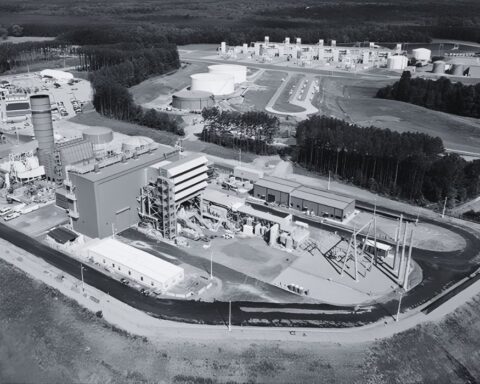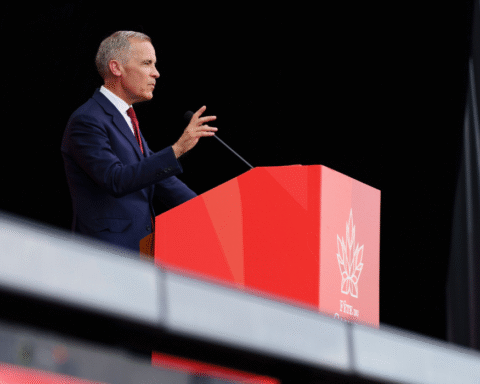If your financial advisor told you he had an investment that would give you a guaranteed 25 to 75% annual return, you would probably pounce on it. Most CEOs and their respective shareholders would also be keen to hear about that kind of opportunity.
We are in the early stages of a boom in energy-efficiency building retrofits that should be worth several hundred billion dollars globally, made possible by new cost-effective building technologies and faster, cheaper wireless communications, against a backdrop of escalating grid energy costs. The result is an economic business case for green building retrofits that deliver payback in just one or two years.
The magical potential in installing thousands of connected sensors, known as the Internet of Things (IoT), and other smart building technology is that, beyond the energy savings generated by synchronizing building functions with real-time needs, we can now capture meaningful data about the building and its spaces. This data can then be mined to identify trends and failure rates or to predict events or economic outcomes. Although a strong business case can be based on energy savings alone, there is an opportunity to now use data to manage your business differently – to increase productivity, enhance customer experience, reduce operating expenses, reduce risk and increase the reliability of your operating environment.
Here’s an example: Imagine a convenience store owner able to implement a smart control system using IoT sensors that will communicate over a dedicated wireless modem, remotely monitoring and controlling the HVAC, lighting and refrigeration equipment to achieve a 30% reduction in energy consumption. This will pay for the system’s implementation in less than two years and will provide more traffic-pattern data than ever before; it will also serve as a means to dispatch cleaning staff and doormat-replacement services, say, after a set number of patrons visit the location. Temperature sensors in the coolers would set off an alarm if temperatures drop below a specified level, preventing spoiled product – and unhappy customers.
The opportunities for leveraging data to improve the effectiveness of your business and, ultimately, its competitiveness, are endless. Today’s energy-efficiency solutions don’t just cut operating costs; they’re a data-gathering platform that can spur innovation.
Corporate Knights researchers and economists recently developed a model to calculate the market opportunity for energy retrofitting in Canada. In addition to the energy-saving and business-innovation opportunities, there are significant societal benefits that would accrue, in the form of GDP growth and job creation.
We are in the early stages of a boom in energy efficiency- retrofits that could be worth several hundred billion globally.
Based on Statistics Canada data, in a business-as-usual scenario, Corporate Knights projects investment in new residential ($419 billion) and commercial building ($376 billion) construction to total $795 billion from 2020 through 2025. In an ambitious policy scenario – more stringent green building codes leading to 50% of new construction built to a zero-carbon-ready standard, financing facilities for basic flood-protection measures, energy retrofitting 3% of the building stock, and electrifying 1.5% of the building stock annually – an additional investment of $44.7 billion in the residential sector and $33.7 billion in the commercial building sector would be required for a total incremental investment of $78.4 billion.
At these levels, we could retrofit 1.67 million houses, roughly 700,000 multiunit residential buildings (MURBs) and 96,000 commercial buildings (for a total incremental investment of $23.4 billion). We could also electrify 831,500 houses, 353,000 MURBs and 48,000 commercial buildings (for a total incremental investment of $22.5 billion) over six years.
In addition to the retrofitting and electrification, the $78 billion would cover flood-proofing for more than 200,000 homes, energy-efficiency audits for commercial and residential buildings, and incremental costs associated with “greening” the new buildings.
GDP Impact
Over the six-year period, this green building stimulus plan would boost GDP by between $46.4 and $179.0 billion for residential and $34.9 and $134.8 billion for the commercial sector.
Job Impact
Using the range of GDP computed, there is potential to create between 155,000 and 183,000 jobs in the green-building, retrofit and renovation sector over the six-year period.
Savings
By Corporate Knights’ calculations, direct savings primarily from retrofitting commercial and residential buildings would add up to nearly $21.5 billion in the residential and $14.3 billion in the commercial sector over the six-year period.
Incentives and Funding Mechanisms
The economic benefits from building owners and landlords investing in energy efficiency are impressive. For this reason, the Building Energy Innovators Council, a Canadian not-for-profit advocacy group, has been encouraging governments to offer incentives for improving energy efficiency and reducing carbon emissions, along with low-interest retrofit loans repaid through a property tax regime. The low-interest, long-term financing model of property assessed clean energy (PACE) loans is a good model for Canada. The first PACE program was started in the U.S. in 2008 to fund improvements that create environmentally sustainable and resilient properties. Now owners and developers are using PACE loans to create more energy-efficient buildings, meet tougher environmental standards, enhance the value of their assets, and attract environmentally conscious tenants to buildings with lower carbon footprints.
The PACE model was used to finance $660 million of sustainable building improvements from 2016 through 2018. One $205 million mixed-use entertainment development project in Omaha tapped a PACE program to pay for LED lighting, heat pumps, low-flow water fixtures, and other materials and equipment to enhance energy and water efficiency.
Promoters say a PACE loan is better than conventional debt used for similar upgrades because it is typically cheaper, it has a fixed interest rate, and terms are 20 to 30 years instead of three to five. Shamrock Development’s $24.9 million PACE loan, for example, is a 22-year term at just below 6%. Unlike conventional loans, a PACE loan becomes an assessment on the property. It’s paid as a component of the real estate tax bill, and it transfers with the sale of the asset to the new owner.
Here’s how PACE can work: A local government raises money by selling a green bond to investors and then uses that money to provide loans to building owners to fund retrofits that meet the energy efficiency criteria, with the necessary certification provided on the application. The local government is repaid via a charge on the property tax bill (generally less than the energy savings), which is then used to cover administrative costs and to pay bond holders their return.
In his new book, The Green New Deal, Jeremy Rifkin writes that there is more than $41 trillion of capital in pension funds around the world, giving the people whose deferred wages sit in those funds tremendous power. Their fund managers understand that international oil companies are at risk of being devalued over the next few years and are keen to shift to cleaner and more efficient sources of energy. This large pool of capital could finance the building-energy-efficiency boom through PACE bond purchases, and ultimately the transformation to a low-carbon economy.
During the last federal election, it became clear that many Canadians are serious about the climate crisis and want to see meaningful progress on reducing carbon emissions. It was also clear that Canadians want responsible government to create a prosperous economic environment that will create sustainable job growth across the country. The “building energy efficiency sector” provides a unique opportunity to accomplish both of these objectives while offering a stable investment for pension funds and other potential lenders and creating a market to promote and showcase Canadian clean-building technologies.
Gord Hicks is the CEO of BGIS real estate management services.
Andrew Hicks is the sustainability manager at BGIS.







